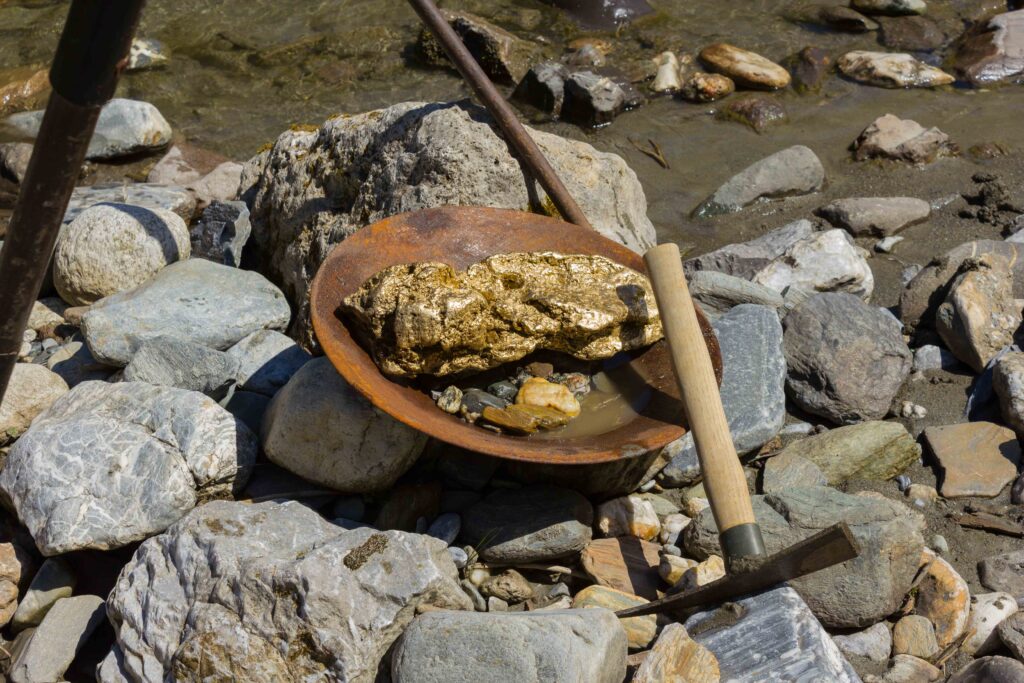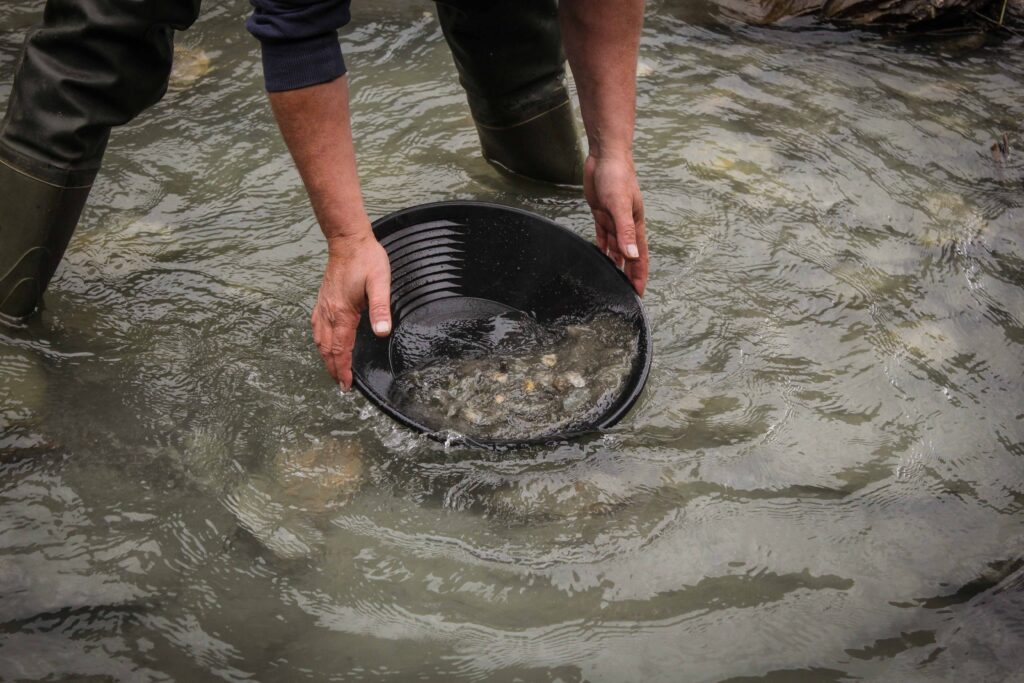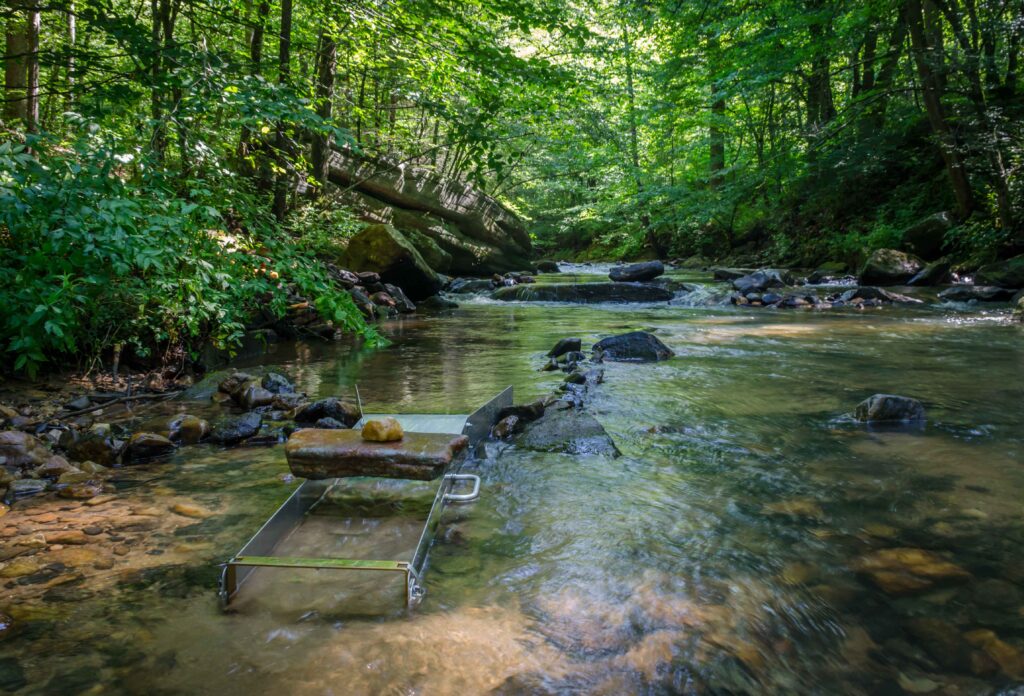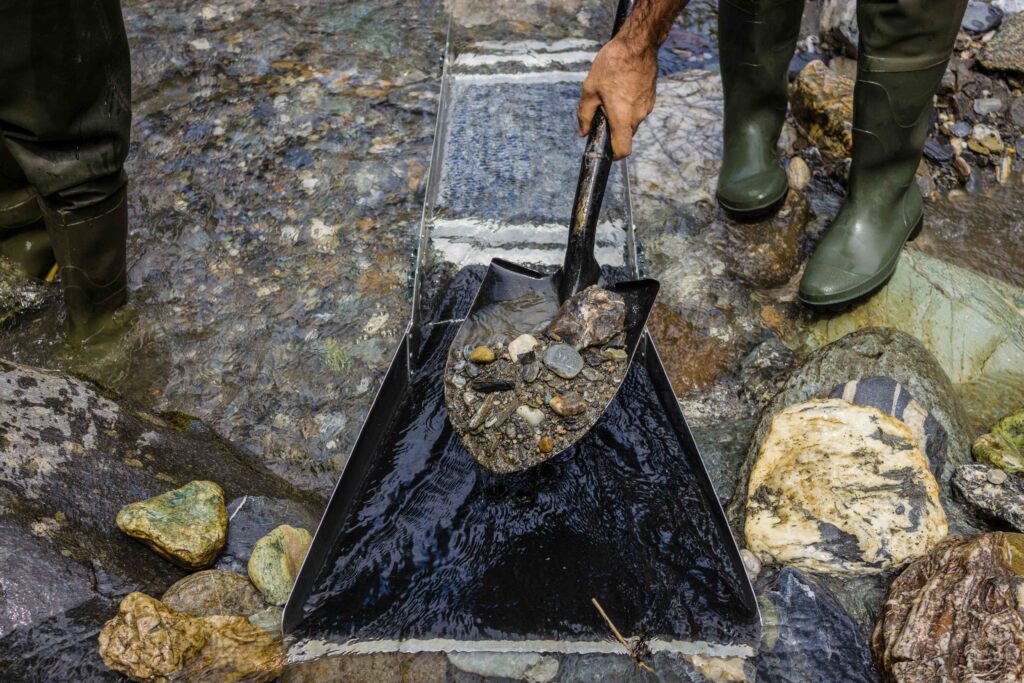Gold Metal Detectors

In Alaska a metal detector will make any gold prospecting trip more productive. They are simple to operate, easy to carry, and can be used in many other adventures, not just your gold prospecting trip to Alaska. They are widely available and can be purchased in Alaska when you arrive. Just remember that many areas produce fine gold and small flakes, but these areas will not usually prove productive with a metal detector. Just the areas with larger gold nuggets will be of interest, and so many locations that are fine for panning and other types of mining will not be worth your time if you plan on going for the big nugget. The most important thing to remember is to have fun while you are using your metal detector in Alaska
Gold Panning in Alaska

Anyone who pans for gold hopes to be rewarded by the glitter of colors in the fine material collected in the bottom of the pan. Although the exercise and outdoor activity experienced in prospecting are rewarding, there are few thrills comparable to finding gold. Even an assay report showing an appreciable content of gold in a sample obtained from a lode deposit is exciting. Regardless of whether you are a new prospector or a pro, the gold pan is still the most indispensable companion you can have. It is one of the first tools used in locating gold and is one of the last used, even in commercial mining to check the value of ore being processed. The Gold Pan is used wherever gold occurs in approximately 75% of all the countries in the world. Until the last twenty years, the most popular pan to evolve was the steel pan. These pans came with and without ridges and typically rusted easily.
Gold Prospecting

Alaska offers visitors a wide variety of activities to do during their trip. Some are unique to Alaska and other activities are best experienced in Alaska. Whether it be shopping for native Alaskan crafts, riding in a dog sled, fishing for halibut, or panning for gold, Alaska will satisfy even the most selective travelers needs for unique and wonderful experiences. A common problem most visitors to Alaska face is not finding something to do during their vacation but rather selecting which of the many options they have available to them do partake in during their Alaska Vacation. We have selected the most popular activities for people coming to Alaska, but this list in far from being definitive. This site is constantly growing and we will add more things to do on your Alaska vacation as time allows. Where appropriate we list approximate prices and time required for the activity. Some of the activities and excursions listed here can be easily done with no prior planning or preparation. Others might require a reservation made months in advance, training, and specialized gear. Whatever the case we will let you so that you can make the most of your Alaska Vacation.
Gold Prospecting in Alaska

Alaska has been home to many of the gold rushes of the 19th and 20th centuries. People came from all over the world to take a chance at making their fortune in the goldfields of Alaska and still do so today. Some are professional exploration geologists and gold prospectors while others are greenhorns learning the ropes of Alaska gold prospecting. No matter what level of experience you bring to the state you can have a wonderful time exploring for gold. You might be content to spend an afternoon panning for gold along the beaches of Nome, Alaska, or maybe you want to run a gold dredge along the forty-mile creek, you might even want to get your supplies and head into the wilds of Alaska to search for the newest gold strike. If you have already been bitten by the gold bug you can utilize these pages to help plan your Alaska prospecting trip, so you can spend most days working in color. Those new to gold prospecting can utilize the information here to get started on their new gold adventure in Alaska.
Gold Prospecting Supplies

This is far from a complete list of places to buy or research the equipment and supplies you will need for your Alaska gold prospecting trip. There are numerous stores in the Anchorage and Fairbanks areas and we have not listed them here. What you will find here are the major suppliers for a given item. They will be able to direct you to a dealer in your area or allow you to purchase directly.
